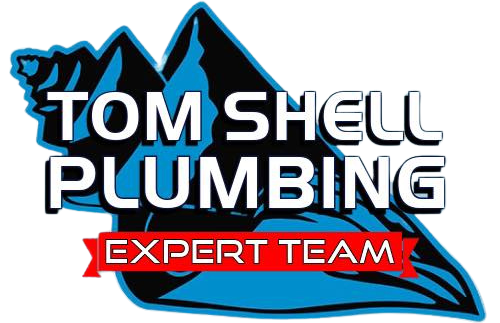What To Do Before The Plumber Arrives
Plumbing emergencies have a knack for happening at the most inconvenient times, turning an ordinary day into a stressful situation. Coming home to a burst pipe that’s turning your living room into a small lake or waking up in the middle of the night to the sound of water gushing from an unknown source can cause a panic. These are scenarios no homeowner wants to face, yet they happen more often than you might think. Knowing exactly what to do in these situations can save you from unnecessary damage and stress.
Burst Pipe
One of the most alarming plumbing emergencies a homeowner can face is a burst pipe. While this often happens in colder regions due to freezing and expanding water, in Florida, it’s more commonly caused by issues like high water pressure, corrosion, or faulty installation. You might first notice a sudden drop in water pressure, followed by water spraying from a pipe.
When you suspect a pipe has burst, the most important action is to stop the flow of water as quickly as possible. This requires knowing where your main shutoff valve is located. Once you’ve located it, turn it off immediately to prevent further flooding. It’s also wise to open all the faucets in your home to drain the remaining water from the system. This reduces pressure in the pipes and can prevent additional leaks.
After you’ve shut off the water, containing the damage becomes your priority. Move furniture, electronics, and valuables out of the affected area to prevent them from getting wet. If the leak is still persistent, a temporary fix is to apply a pipe repair clamp or wrap the damaged pipe section in rubber and secure it with a pipe sleeve or hose clamp. This isn’t a permanent solution, but it can help contain the water until a plumber arrives.
Overflowing Toilet
An overflowing toilet is not only frustrating but can also cause significant water damage if not addressed promptly. This problem usually arises when there’s a blockage in the drainpipe or a malfunction in the toilet’s float mechanism. The first sign is often water rising to the brim of the toilet bowl after flushing, indicating that the toilet isn’t draining properly.
To prevent the toilet from spilling over, act fast by removing the tank lid and pressing down on the flapper valve to stop more water from entering the bowl. If this doesn’t work, locate the shutoff valve behind the toilet, usually near the floor, and turn it off. This stops water from flowing into the tank, giving you time to address the blockage.
If the level has stabilized, the next step is to clear the blockage. A plunger is often the first tool people reach for, and it can be effective for dislodging clogs. However, if plunging doesn’t solve the issue, avoid using chemical drain cleaners, as these can damage the pipes and cause more harm than good. Instead, you might try using a plumbing snake, also known as an auger. This tool is inserted into the drain and rotated to break up the clog and allow water to flow freely again. If you’re unable to clear the blockage, it’s essential to call a plumber to avoid further complications.
Clogged Drain
A clogged drain can disrupt daily routines and cause water to back up into sinks, showers, or bathtubs. This issue is commonly caused by the buildup of hair, soap scum, grease, or foreign objects in the pipes. If left untreated, a clogged drain can lead to more severe plumbing problems, including leaks or pipe bursts.
The first sign of a clogged drain is typically slow drainage. If you notice that water is pooling in your sink or tub, it’s time to take action. One effective method to clear a clogged drain is using a plunger. For sinks, fill the basin with a few inches of water to create a seal, then place the plunger over the drain and pump it vigorously. In the case of bathtubs or showers, it’s important to cover the overflow hole with a wet cloth before plunging to ensure that all the pressure is directed towards the clog.
Leaking Water Heater
A leaking water heater is more than just an inconvenience; it can lead to significant damage if not dealt with promptly. This problem often starts small, with a puddle appearing under the heater, but can escalate quickly. Common causes of leaks include a failing pressure relief valve, excessive pressure inside the tank, or corrosion due to age and sediment buildup.
If you discover a leak, the first step is to cut off the power to the heater. If your heater is electric, locate the breaker panel and switch off the breaker that controls the heater. For gas-powered heaters, turn the gas valve to the “off” position. Next, shut off the cold water supply valve to prevent more water from entering the tank and exacerbating the leak.
To minimize damage while waiting for a plumber, you can drain the tank by attaching a hose to the drain valve at the bottom of the heater and directing it to a floor drain or outside. This helps reduce pressure in the tank and prevent further leaking. It’s important to remember that water heaters are complex appliances, and attempting to repair or replace parts without proper knowledge can be dangerous. A licensed plumber should be called to diagnose the issue and recommend the best course of action, whether it’s repairing a faulty valve or replacing the entire unit.
For prompt and reliable plumbing services, trust Tom Shell Plumbing to handle your emergency with expertise and care. Whether it's a burst pipe or a leaky water heater, we're here to provide swift solutions and peace of mind.
Contact us today and let our experienced team take care of your plumbing needs before a minor issue becomes a major headache.
